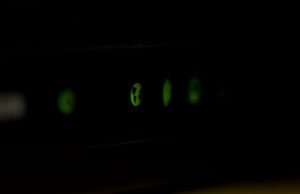Jesse Hirsh | The Internet of Hackable Things
 Today’s guest blog is courtesy of Futurist & Digital Strategist Jesse Hirsh. Jesse explains and analyzes the latest trends in technology using language and examples that are relatable, meaningful and relevant to everyday life. He focuses on research and consulting around new media business models, big data, and the strategic use of social media. As a new media educator, Jesse’s passion is helping people and organizations identify the potential benefits and perils of technology.
Today’s guest blog is courtesy of Futurist & Digital Strategist Jesse Hirsh. Jesse explains and analyzes the latest trends in technology using language and examples that are relatable, meaningful and relevant to everyday life. He focuses on research and consulting around new media business models, big data, and the strategic use of social media. As a new media educator, Jesse’s passion is helping people and organizations identify the potential benefits and perils of technology. 
The Internet is a force of nature. A kind of virus that spreads all across the globe, connecting as many people as possible to the network of networks.
Never satisfied, the Internet is now moving beyond people to connect all the objects in our world, creating something called the Internet of Things (IoT).
The rise of the Internet of Things is happening faster than anyone has anticipated. Home appliances, cars, factories, office spaces, event spaces, all the areas and objects that people use are starting to go online.
One of the reasons people are embracing this Internet of Things is that it genuinely helps us make better use of those “things”, providing data about their state, their relationship with us, and their greater potential with regard to uses we may not have previously anticipated.

For example, imagine an event using IoT technology to better understand where people are spending their time, which exhibits or spaces are more popular, and how people are reacting to programming and activities. The appeal of the Internet of Things is real, and the applications are growing rapidly.
Unfortunately this speed of adoption is out pacing our ability to properly secure and contemplate the impact these devices will have.
One of the great vulnerabilities of our era arises from the difference in speed between humans and software. Our velocity is significantly slower than that of machines. There’s only so much we can do in the course of a day. Software on the other hand never gets tired, and can operate at the speed of light.
We tend not to think of this speed difference when we buy a baby monitor that uses wifi so we can monitor our kids while they sleep, while we sit in another room. We don’t take the time to learn how to properly secure said baby monitor, let alone the new fridge that has Internet access, or the digital video recorder (DVR) that is always left on.
 Software on the other hand, can rapidly crawl across the Internet of Things, probing for back doors, checking for default passwords that have never been changed.
Software on the other hand, can rapidly crawl across the Internet of Things, probing for back doors, checking for default passwords that have never been changed.
Recently a piece of open source software called Mirai was published on the Internet. It is a kind of malicious software, or malware, that can crawl across the Internet of Things finding devices to hack, uniting them into a larger army of zombie computers ready and willing to follow the commands of the person running the software, or anyone who pays them for the privilege to do so.
This came to the public’s attention when someone used thousands of hacked baby monitors, discovered via the use of Mirai, to disable a significant part of the US east coast Internet. All of a sudden people started to realize just how insecure the Internet of Things may be. Our rush to connect the things in our world and collect as much data as possible has left us vulnerable to a new era of insecurity.
For example, many insurance companies are embracing IoT technology to help monitor the habits of drivers, or monitors the state of your home. They offer potentially lower rates as they can better profile and understand their customer. However what happens if and when those tracking devices are hacked. Who is responsible in such a situation? The customer in possession of the device or the company that encouraged them to adopt it?

We need to be careful about the devices we use, how they are connected, what data they collect, and most importantly how they are secured and maintained. Technology is dynamic, and security is ongoing. If we want to use these new (and exciting) tools, then we need to take responsibility for them as well. Tragically most users of technology have not been willing to take responsibility for their tools, and this may get a whole lot worse as we become surrounded by more objects that track our activities and habits.
The world of open source provides us with a powerful framework by which to approach the Internet of Things.
Part of the reason Mirai was so successful in attacking the Internet of Things was because it was open source, and different attackers were able to share and learn from the lessons that it offered.
One of the ways to make it easier for users of IoT to take responsibility for their technology is if it too is also open source. Open source makes security easier as patches can be shared, solutions can be applied across the system, and many hands can make for a lighter load.
Similarly there needs to be transparency when it comes to how our data is used, so that when we enter environments where IoT technology is tracking, and profiling us, we can respond accordingly.
Finally open source allows the IoT to continue to spread as rapidly as possible, while making it easier for anyone to understand and leverage the technology for themselves.
Of course, a large part of the Internet of Things is already open source, driven by technology like the Raspberry Pi and commitments from many companies to share the software they use to enable it.
However consumers themselves also need to add the logic of open source to their purchasing positions. Are the connected devices that you’re buying open source? Are you able to verify and maintain their security with ease and convenience?
These are questions you need to ask yourself before wading further into the Internet of Things.
 Learn more about how Jesse’s insights can help your organization achieve success by checking out his speaker profile or by contacting us.
Learn more about how Jesse’s insights can help your organization achieve success by checking out his speaker profile or by contacting us.
